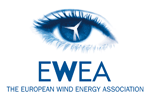Policy News, BB200606
Emissions Trading Scheme flawed allocation process exposed
30.01.2007
The first tranche of independently verified emissions data relating to how installations and countries performed against their targets in the EU emissions trading scheme (EU ETS) in 2005 was released by the European Commission mid-May, precipitating a crash in the carbon price. The data showed that countries were already comfortably within their target bands, illustrating that the permits to pollute, which are distributed for free, were over-allocated. Whilst this was known amongst inside participants and observers of the allocation process, the concrete figures sent prices tumbling from a high of €30/ton CO2 to a low of around €10/t CO2.
Four member states – Cyprus, Luxembourg, Malta and Poland – have not yet got their registries operational, but among the 21 member states that have active registries, 1,829.5 million allowances were allocated on an annual basis to installations in the scheme’s first period and for 2005 approximately 1,785.3 million tonnes of CO² were recorded (by 30 April 2006). A small number (849 out of 9,829) installations have still to report.
Data appeared on the Friday before the official date (Monday 15th May), sparking the price collapse and causing a scurry of confusion. The data turned out to be correct but the event did not help the process. The over-allocation has damaged the scheme’s reputation, perhaps only momentarily. The Commission’s stance is that it had to make allowances in weight of the heavy political lobbying in order to get the scheme up on its feet. It’s view is that it will toughen up on industry considerably in the second phase, due to commence 2008, in order for the scheme to contribute to its essential goal of meeting the EU’s Kyoto target of 8% reduction of industrial emissions next to a 1990 benchmark. The next phase runs up to its target deadline of 2012. The Commission is currently undertaking a review of the ETS, and concurrently countries are submitting their National Allocation Plans (NAPs) for the next phase, the area that has proved the undoing of the first lap of the scheme.
Abyd Karmali, managing director of ICF Consulting and emissions trading expert who was instrumental in many NAPs was quoted in the FT as saying: “This surplus is not going to provide an incentive to business to invest in low-carbon technology. It’s not going to provide an incentive for anything other than business as usual.”
The design of the scheme allowing countries to formulate their own agendas led to evident distortions that the Commission is trying to iron out in the next phase by aiming for a more harmonised system. It also led to significant strife within national economies as industries battled for non-punitive measures and within the European Community as member states struggled against one another for their share of permits. Amongst the more powerful EU economies, only Britain, Spain and Italy were given challenging agendas for their industries, according to the figures and reports.
EWEA’s position
EWEA is against free allocation as it does not agree with the principle that the biggest polluters are proportionally rewarded with the greatest number of certificates. It runs against the polluter-pays principle (Article 174 of the Treaty Establishing the European Community).
It gives too free a hand to industry and Member States to turn the scheme to its advantage. The power generating sector have profited from notable windfall profits in the first year of the scheme, to the extent that one analyst ascribed the momentous M&A activity in the utilities sector to the windfall profits at an emissions trading scheme conference earlier this year.
Auctioning would solve this erroneous situation, and invoke real environmental-economic efficiencies by internalising the external costs of CO2 emissions into the power price. Analyses of the ETS put auctioning forward as the sensible option - see Climate Policy, the EU Emissions Trading Scheme, Grubb, and a most recently published paper, May 2006, by Sijm, Neuhoff and Chen.
Michael Grubb writes: “Several factors in combination have led to the present over allocation: a logically flawed basis to the allocation methodologies; corporate lobbying based upon competitiveness concerns; and the ability for each country to allocate free allowances to its own firms. It is almost as if each country was allowed to print its own Euros, without any reference to inflation risks, and then to give the Commission a weak legal mandate just to check that the surplus Euros did not constitute an illegal subsidy to specific sectors.”
In early climate policy in the 1990s the EU opposed market mechanisms and advocated a strong framework of fiscal and regulatory measures to achieve greenhouse gas reduction. Coming up against resistance to such a tack, primarily from the US it buckled and went for the emissions trading scheme.
EWEA believes in full auctioning but acknowledges this is probably not realistic for the present moment and is therefore urging for the most upper band of auctioning as possible.
Auctioning is required as the ETS’ objective to rein in industrial emissions has thus far not worked.
Were a low carbon price to persist, the incentive for industry to make costly adjustments towards cleaner technologies would be removed, and it would not deter investment approaches towards fossil fuel power generation.
Aside from auctioning, the major point that EWEA stresses in relation to the ETS is that a focus on short term solutions such as energy efficiency in power generation risks creating a gap in the technological development of renewable energy sources that are a precondition for combating climate change at the lowest possible cost in the long run.
In an essay published on 14 May, Lester Brown, head of the Earth Policy Institute, argues that “sustaining our early 21st-century global civilization now depends on shifting to a renewable energy-based, reuse/recycle economy with a diversified transport system."
He writes that among the new sources of energy--wind, solar cells, solar thermal, geothermal, small-scale hydro, biomass--wind is emerging as a major energy source. In Europe, which is leading the world into the wind era, about 40 million people now get their residential electricity from wind farms.
Wind energy in 2010 in the EU-15 is expected to meet over 30% of EU's Kyoto obligation by saving 109 million tons of CO² annually, on current policies and industry projections, according to EWEA (75 GW report, October 2003).
The first phase of the Emissions Trading Scheme has been undermined by free allocation and over-allocation. The second phase holds out more promise in the Commission’s intention to improve the process, and the overall urgency of meeting Kyoto targets. But as a scheme that deals in virtual permits, it is still vulnerable to abuse.
The Linking Directive that became law in November 2004 paves the way for EU-15 polluters to shift its attentions to get-out routes lurking in the developing world (the Clean Development Mechanism) and the acquiring of ‘hot air.
 Older
Older



Follow EWEA on: